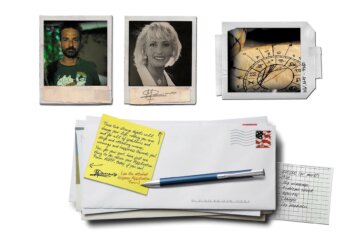This is the first instalment in a series about a criminal rape trial that took place in Toronto late last year. The trial lasted eight days; the judge announced his verdict earlier this month.
At the time of the actions that led to the criminal charges, the female accuser was seventeen years old, entering her final year of study at a Toronto high school. The male defendant was a year older, a star athlete on his way to winning a scholarship to a US college. She had substantial credibility problems on the witness stand. His testimony seemed far more convincing—at least at first. But this was more than just a “she said, he said”—or, as it turned out, “she lied, he lied”—case. There was an element of physical evidence against him: bruises on her arms and legs. The judge had to decide if the totality of the prosecutors’ case against the defendant was enough to send him to jail, brand him a sexual offender, and destroy his promising future.
Despite its sensational nature, this was a case that never made headlines. What I observed during my reporting was the farthest thing from a Jian Ghomeshi courthouse scene, with mobs of press and police. I was the sole reporter at the superior court trial and, on most days, the only observer not directly related to the case. The mother and grandmother of the accused, whom I will call Matthew in the reports that follow, attended throughout the trial. The complainant, who will be known as Ava, was supported by a representative from victim services and the detective in charge of her case.
Ava’s family and Matthew’s father were not permitted in the courtroom as they were all considered to be potential witnesses. They spent much of their time in the courthouse hallways, pacing or sitting nervously. Like everyone else, they knew that the events unfolding on the other side of the courtroom door would deeply affect the two young people involved for their entire lives.
[breakline]From the very beginning, Ava (not her real name), who is the first witness and the key to the prosecution’s case, proves extremely agitated on the stand. Sharna Reid, an assistant Crown attorney, questions her in a low-key, matter-of-fact manner. Ava explains that she had dated the defendant, Matthew (not his real name), in the summer of 2012. But when Reid asks if they were still boyfriend and girlfriend in the early hours of that August 2 morning, when the alleged assault took place, she doesn’t reply. Reid rephrases the question.
“I can’t breathe,” Ava answers, in a voice that is barely audible. (A note to readers: all of the quotations from the trial that I provide in these reports are accurate, but they do not comprise a comprehensive transcript of the entire trial.)
Ontario Superior Court Justice Gary Trotter, who is perched above the witness, looks down and tells Ava kindly that she needs to relax: she is there to tell her story, and he is there to listen. Trotter asks if she wants a break. When she says yes, the court is recessed for ten minutes—or longer, if she needs it. He tells the Crown to call him back when they’re ready.
After Ava leaves the room, the judge turns to the defence lawyers, Carolyne Kerr and Gary Stortini. “I don’t want you to think I’m coddling the witness,” he says, explaining that he recently had called out another witness (in another trial) for what he felt were amateur theatrics.
This trial is taking place in December 2014, during a time when sexual assault is in the headlines almost daily. For one, there’s Jian Ghomeshi. Two, a steady stream of women are accusing Bill Cosby of drugging and sexually assaulting them. Meanwhile, Rolling Stone magazine’s sensational story about sexual assault at the University of Virginia, “A Rape on Campus,” is being debunked as shoddy journalism.
The accused is being tried by judge alone, with no jury. If the judge believes the defendant’s account of events, Matthew will be found not guilty. If the judge can’t decide who to believe, Matthew will be found not guilty. If the judge believes Ava’s story beyond a reasonable doubt, Matthew will be found guilty.
Half an hour later, when court resumes, Ava, although still visibly distraught, is able to answer the Crown’s pre-break question. In July, just two weeks before the alleged assault, she told Matthew that she just wanted to be friends. “For my birthday, he didn’t show up,” Ava says. “I took it as a sign I was wasting my time, [that it was time] to end it.”
The standard publication ban covering sexual assault cases prevents any mention of Ava’s name or any other details that may serve to identify her. But I can tell you that she is a fresh-faced and attractive teenager.
I also have made the decision not to identify Matthew. Nothing about this case has ever made the news. If he is found not guilty, he will walk away from all this without so much as a single Google mention about the charges he faced. That seems fair to me. I can tell you that Matthew is tall and dark, the physical opposite of Ava in these respects. His scholarship and promising future depend on this trial, but he sits quietly and composed throughout, waiting for the moment when he will take the witness stand to give his version of events.
For now, he listens to Ava, who is answering questions about her relationship with him and the alleged rape. The Crown asks if the videotaped statement she gave to police on August 3, 2012 is the truth. Ava says it is, which means that instead of her testifying to the court about what happened back then, her police statement will be taken as evidence. The interview appears on the monitors of all the court officials and lawyers.
The two officers who took Ava’s statement, we see on the video, are both men. The primary interviewer is Detective Brian Wookey, who is present in court throughout the trial, and extremely protective of Ava. The videotaped statement begins with her giving her account of what happened in the hours that preceded the alleged assault, when she and two friends went to see a Down with Webster concert at Dundas Square.
“I’ve heard of them,” says Wookey. “But I don’t know any of their tunes.”
He appears to have a good rapport with Ava, and she seems less nervous on the video than in the courtroom. On the screen, she explains how her father dropped her off at her girlfriend Zoe’s house (also not her real name), where she was supposed to spend the night.
Ava says that as she, Zoe, and another friend got ready for the concert, they split a mickey of rum before hopping on the subway to head downtown. At the concert, Ava and Zoe got into an argument over booze. Zoe and the other friend walked off, leaving Ava to find her own way home. Because it was after midnight and the bus from the subway to her house was no longer running, Ava says, she started calling friends with cars, looking for someone to give her a lift home from the TTC station. According to her account, none of the first three people she tried picked up, so she made a fourth call to Matthew, who agreed to meet her at the station.
Ava says she and Matthew hadn’t had much contact in the two weeks since he stood her up on her birthday. They had texted the weekend before, while she was in Muskoka, north of Toronto. And then earlier that day, she been in touch with him about getting back some of her belongings.
Wookey asks how long they talked.
“A total of an hour throughout the day,” says Ava. “There were twenty messages between me and [Matthew].”
Wookey is confused. “Do you mean talk on the phone or texts? ” he asks.
“No talk on phone, just messages,” says Ava. “BBM [BlackBerry Messenger].”
As the videotape plays, Ava watches herself from the witness stand. She covers her eyes with her hand, and sometimes covers her mouth, as well. She pulls up the scarf looped around her neck to hide the bottom of her face. She looks away in distress. She cries.
Wookey asks Ava how she originally met the accused, and she replies that she had known him since she was in grade nine when he dated a friend of hers. “In April [2012], he messaged me on Facebook that he was coming home from the States in June. He gave me his number and [BBM] PIN.”
Following that, they dated for about a month and a half before the split-up in July 2012.
When Matthew picked Ava up at the subway station early on the morning of August 2, she says on the video, she put on some music in his car and told him what she’d been doing. “It was normal chat, didn’t feel awkward,” she says. “I said I was good but tired, upset about [Zoe].”
They drove the normal route toward Ava’s house. But just before they got there, she says, Matthew turned into a school parking lot and asked if they could talk.
“There were two garbage bins. We were right beside [one],” she says. “He unbuckled his seatbelt. He tried kissing me. I pushed his face and said, ‘Please stop.’ ”
“He said, ‘I know you want to. You miss me. I miss you.’ ”
She says he tried to kiss her again and got mad when she resisted.
According to Ava’s account, Matthew said, “What am I? Your fucking taxi driver? ” To which she replied, “No, you’re a friend doing a favour,” she said. This, she says, prompted Matthew to answer, “If I did you a favour, I should get a favour in return.”
“I said, ‘Stop, you’re being ridiculous.’ I kept repeating stop. I asked him, ‘Please take me home.’ He said, ‘You want it,’ and put the passenger seat back.”
Over and over, Ava repeats that she kept telling Matthew to stop, that it wasn’t funny, that she wanted to go home.
“I grabbed my phone. He grabbed it out of my hand and threw it in the back seat. The back of my phone fell off. I froze when he threw my phone. . . . He was pinning me down. His knees were on my thighs.”
Matthew held down her arms, Ava says: “He had sex with me when I didn’t want to.”
Wookey asks for details of the assault. Among other things, he wants to know how long it lasted.
“Forty-five minutes,” Ava says.
Wookey rephrases the question twice to make it clear he’s talking about the duration of the assault itself, not the entire encounter.
“Forty-five minutes,” Ava repeats. “I tried to push him off. He had no condom.”
In court, as Ava listens to this discussion of the most intimate details, she holds a tissue over her mouth and a hand over her eyes. A few minutes later, she puts her hands up through her scarf and holds her cheeks. She appears highly distressed.
After the alleged rape, as Matthew was supposedly putting on his pants, Ava says she grabbed her phone and ran out of his car to her home. It took her two minutes to get there.
Justice Trotter looks at Ava, who now has her head down on the witness stand.
On the video, she says that when she arrived home, she was crying and dishevelled. She immediately took a bath and noticed bruises on her arms and her legs. Her mother came into the bathroom and asked why she was upset, what was going on. Somehow, Ava’s mom found Matthew’s number and began texting him.
Not long after this, Ava’s father, who is divorced from her mother, arrived at the house. “My parents and I decided to call the police,” Ava says. An ambulance took her to a hospital, where she was treated by a rape nurse. The nurse took vaginal and oral swabs; Ava was prescribed antibiotics and an emergency contraceptive pill.
Wookey questions Ava about how she felt at the subway station where she met Matthew, if the effects of the rum she drank earlier had worn off. “I didn’t feel drunk,” she answers. “I felt tired. I was not drunk. I was upset because of what happened with [Zoe].”
As the video statement wraps up, Wookey asks Ava to show him the bruises on her arms and legs. With that, the monitors are turned off and the court breaks for lunch.
When we return, the photos of Ava’s injuries are entered for the record. The pictures were taken on two different dates: on August 2, the day of the alleged assault, and on August 6, when her bruises were most visible.
Assistant Crown attorney Reid shows Ava the first photo in a series.
“What is the cause of those bruises? ” she asks.
Ava answers.
“What portion of his body caused that bruise? ”
“Where was the photo taken? ”
“Tell us about the injuries.”
When the later set of photos are introduced, Ava is asked: “Was there any event or episode in between that caused the injuries? ”
“The incident in the car August 2,” she says.
Ava seems less distraught now than she was during the morning session, but she remains anxious as Reid asks some questions unrelated to the photos.
“Could you have left that vehicle before you did? ”
“No. He was holding me down.”
“Do you know whether the door was locked or unlocked? ”
“No, I don’t know.”
“Describe your level of intoxication.”
“It [had] decreased. I wasn’t even drunk.”
“What was the level of force? ”
“His hands and his body.”
“Do you know what [Matthew] did when you left the car? ”
“No. I didn’t look at him.”
When the Crown is finished questioning Ava, she leaves the witness stand and the room.
Next, the judge presides over a non-public session known as a “276 application,” which will continue until lunchtime the following day. The name refers to Section 276 of the Criminal Code, also known as the rape-shield law, which sets out the procedures that must be followed in order to introduce anything relating to the previous sexual history of a sexual assault complainant—including the history between the complainant and the accused.





